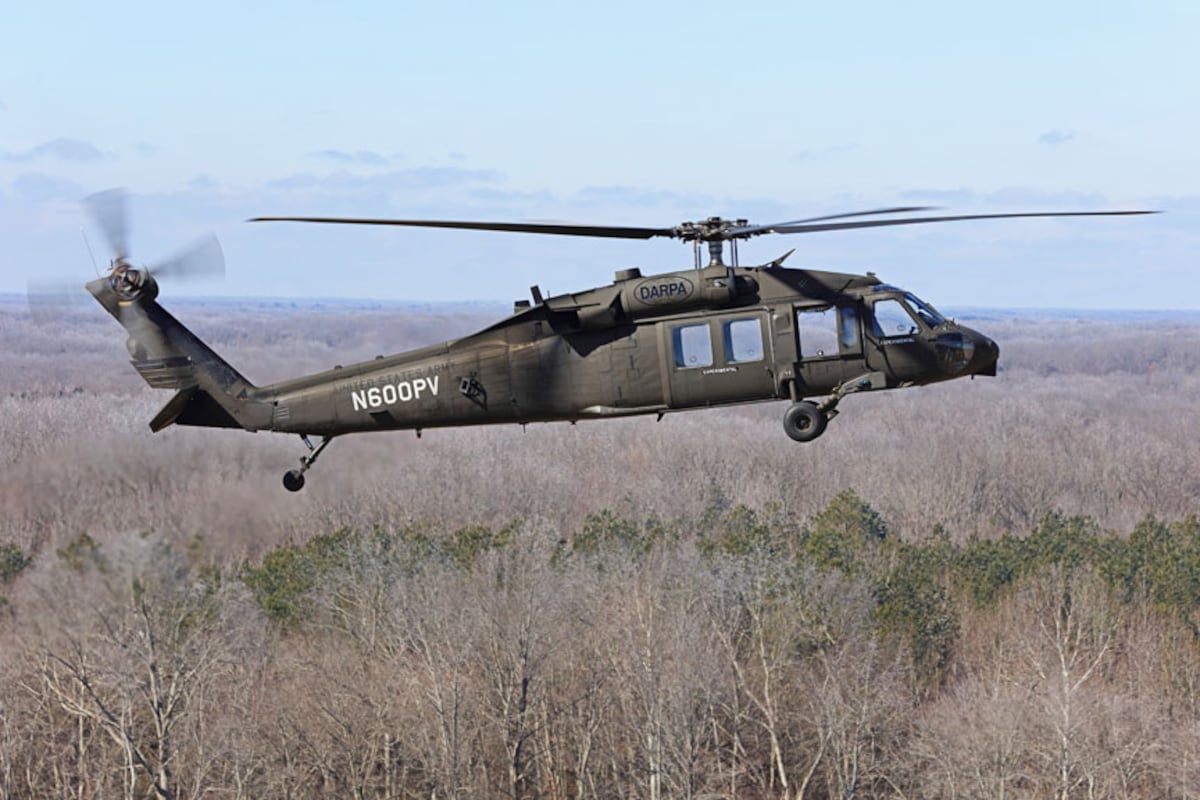Exploring the Thrills and Innovations of the Blackhawk Helicopter
The Blackhawk helicopter stands as a testimony to military air travel's development, combining technological advancements with functional applications. What lies in advance for this iconic airplane, and just how will arising innovations form its future in military procedures?
Background of the Blackhawk Helicopter
Given that its beginning in the 1960s, the Blackhawk helicopter has actually played a pivotal role in modern-day military air travel. Established by Sikorsky Aircraft, the UH-60 Blackhawk was made to meet the united state Army's need for a versatile utility helicopter with the ability of doing a range of objectives, consisting of army transportation, clinical discharge, and cargo airlift. The style was a response to the limitations of earlier helicopters, specifically in regards to survivability, rate, and ability to move.
The Blackhawk made its first flight in 1974 and soon went into service in 1979. Its intro marked a considerable innovation in helicopter innovation, featuring a two-rotor system that enhanced performance and stability. The airplane's sturdy building and construction and progressed avionics allowed it to operate effectively in varied settings and conditions.
Throughout the years, the Blackhawk has actually been continually updated, incorporating lessons gained from different battle situations. Its implementation in conflicts such as the Gulf War, Somalia, and the War on Fear further strengthened its reputation as an essential property. The Blackhawk's heritage is characterized by its versatility and resilience, making it a foundation of military air travel for decades.
Key Functions and Specs
The Blackhawk helicopter is identified by its durable design and progressed technological features, which collectively boost its functional capabilities. Developed mainly for utility goals, the Blackhawk flaunts an optimum launch weight of about 22,000 pounds, allowing it to lug significant hauls while preserving dexterity.
Outfitted with two General Electric T700-GE-701C engines, the Blackhawk attains an optimal speed of around 183 knots and a range of 368 nautical miles - Blackhawk Helicopter. Its state-of-the-art rotor system features a four-blade main rotor and a four-blade tail blades, making certain security and maneuverability in numerous flying conditions
The helicopter's cabin can fit as much as 11 soldiers or various cargo arrangements, showcasing versatility in objective accounts. In addition, the Blackhawk is made with sophisticated avionics, consisting of electronic flight controls and a detailed cockpit display screen, boosting pilot situational awareness.
For improved survivability, the Blackhawk integrates ballistic shield and self-sealing fuel storage tanks. Its ability to run in varied settings, from deserts to icy terrains, additionally strengthens its reputation as a dependable system for military and altruistic operations alike. The Blackhawk's mix of durability, adaptability, and power makes it a keystone of modern aerial abilities.
Developments in Innovation
Advancements in technology have significantly enhanced the abilities of the Blackhawk helicopter, guaranteeing it stays at the leading edge of armed forces air travel. One of one of the most significant advancements is the combination of sophisticated avionics systems, which provide enhanced situational awareness via real-time data processing and display. This modern technology enables pilots to browse complex settings better, boosting mission success rates.

In addition, the intro of digital fly-by-wire systems has actually reinvented the control systems of the Blackhawk, giving smoother handling and increased responsiveness. Collectively, these technological innovations guarantee that the Blackhawk helicopter remains a crucial asset in modern armed forces procedures.
Functions in Military Operations
With advanced technology boosting its capabilities, the Blackhawk helicopter plays a multifaceted role in army operations. Primarily, it is employed for troop transport, making it possible for quick deployment and extraction of workers in various combat situations. Its sizable cabin can suit approximately 11 troops, making it an essential possession for special procedures and massive goals.
Additionally, the Blackhawk functions as a medevac system, geared up to transport damaged soldiers rapidly and efficiently from web the battleground to medical centers - Blackhawk Helicopter. Its adaptability encompasses logistical support, where it lugs supplies and equipment critical for maintaining armed forces procedures in remote locations

The helicopter is likewise important in reconnaissance goals, providing aerial surveillance and intelligence-gathering capacities. Its ability to operate in diverse environments-- varying from urban settings to extreme surfaces-- more solidifies its value on the field of battle.
Moreover, the Blackhawk can be outfitted with sophisticated weaponry, enabling it to engage in combat and supply close air support. This versatility underscores the helicopter's important function in modern-day army methods, making it an important part of militaries worldwide.
Future Advancements and Innovations
Advancements in modern look at here technology assurance to usher in a brand-new age for the Blackhawk helicopter, boosting its capabilities and functional effectiveness. Future developments for the Blackhawk might include enhancements in avionics, such as sophisticated flight control systems and improved situational awareness devices powered by synthetic intelligence.
Additionally, the combination of unmanned systems is on the horizon, potentially enabling manned-unmanned teaming operations that can expand goal accounts and lower risk to personnel. The Blackhawk's design is also expected to integrate lighter and stronger materials, improving fuel effectiveness and overall efficiency.

Conclusion
In conclusion, the Blackhawk helicopter represents a substantial achievement in army air travel, defined by its adaptability and progressed technological functions. Its historical advancement reflects a continuous response to operational requirements, boosting capabilities in different roles such as troop transport and medevac procedures. Ongoing technologies, consisting of the combination of expert system and hybrid-electric propulsion, guarantee to more reinforce the Blackhawk's effectiveness and relevance in future army involvements, guaranteeing its condition as a crucial property on the battleground.

With innovative innovation boosting its abilities, the Blackhawk helicopter plays a diverse role in military procedures. (Blackhawk Helicopter)
 Devin Ratray Then & Now!
Devin Ratray Then & Now! Jason J. Richter Then & Now!
Jason J. Richter Then & Now! Michael Jordan Then & Now!
Michael Jordan Then & Now! Danielle Fishel Then & Now!
Danielle Fishel Then & Now! Ricky Schroder Then & Now!
Ricky Schroder Then & Now!